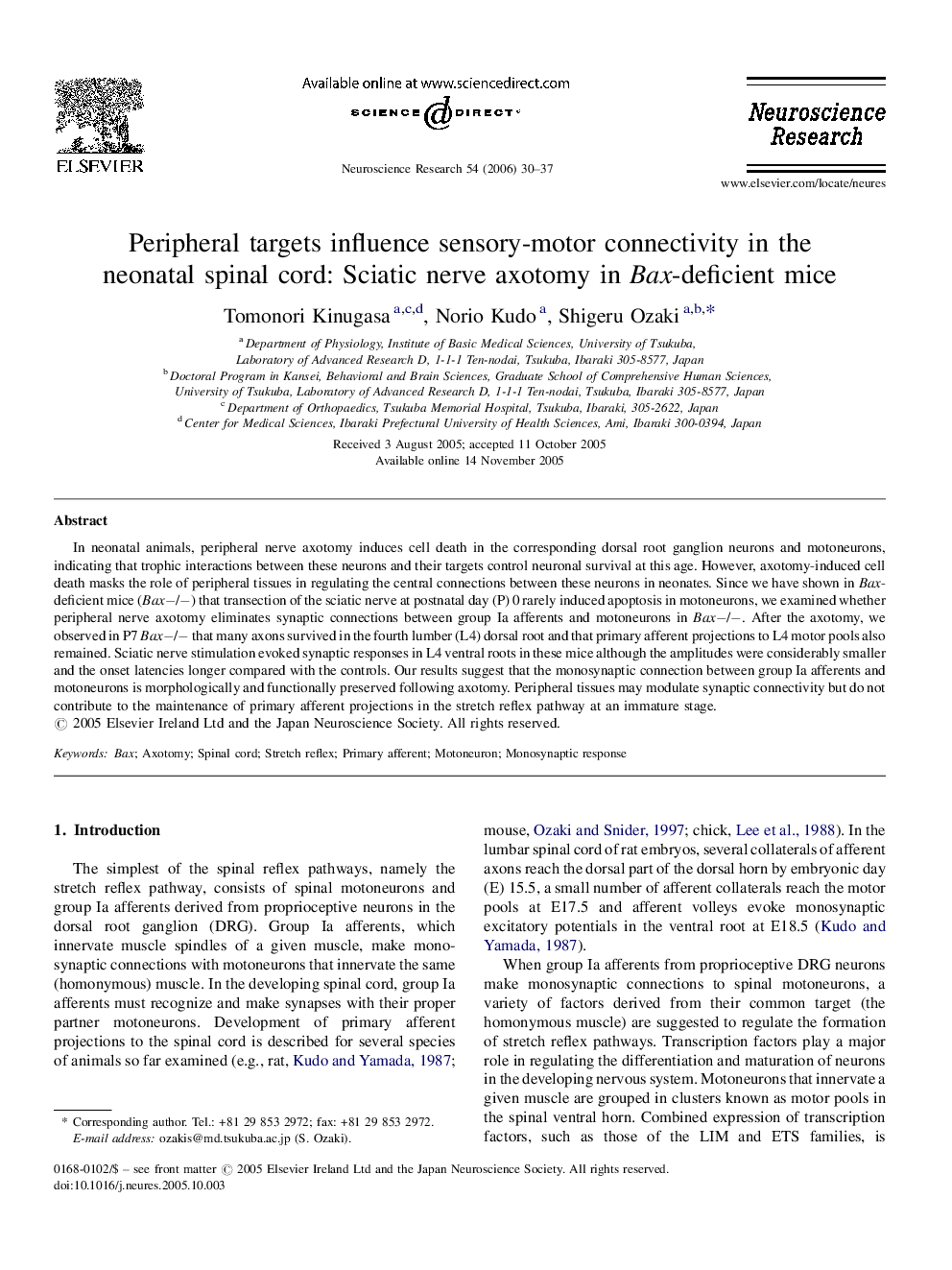| Article ID | Journal | Published Year | Pages | File Type |
|---|---|---|---|---|
| 4352800 | Neuroscience Research | 2006 | 8 Pages |
In neonatal animals, peripheral nerve axotomy induces cell death in the corresponding dorsal root ganglion neurons and motoneurons, indicating that trophic interactions between these neurons and their targets control neuronal survival at this age. However, axotomy-induced cell death masks the role of peripheral tissues in regulating the central connections between these neurons in neonates. Since we have shown in Bax-deficient mice (Bax−/−) that transection of the sciatic nerve at postnatal day (P) 0 rarely induced apoptosis in motoneurons, we examined whether peripheral nerve axotomy eliminates synaptic connections between group Ia afferents and motoneurons in Bax−/−. After the axotomy, we observed in P7 Bax−/− that many axons survived in the fourth lumber (L4) dorsal root and that primary afferent projections to L4 motor pools also remained. Sciatic nerve stimulation evoked synaptic responses in L4 ventral roots in these mice although the amplitudes were considerably smaller and the onset latencies longer compared with the controls. Our results suggest that the monosynaptic connection between group Ia afferents and motoneurons is morphologically and functionally preserved following axotomy. Peripheral tissues may modulate synaptic connectivity but do not contribute to the maintenance of primary afferent projections in the stretch reflex pathway at an immature stage.
